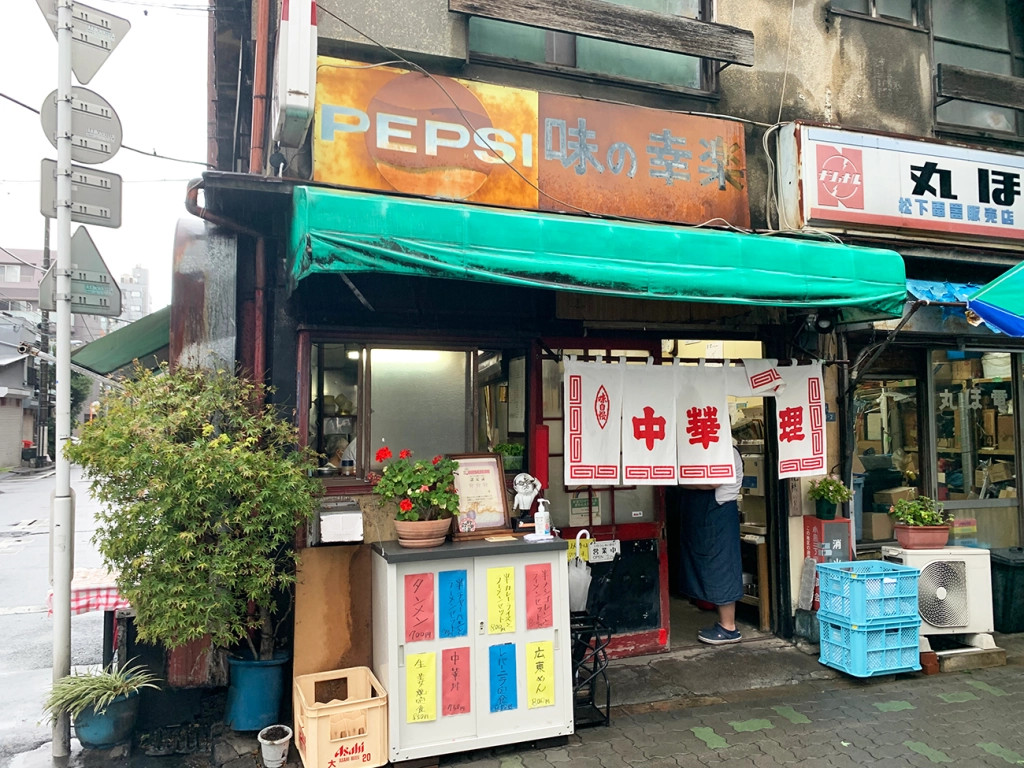
Yes, even we wondered, “Why?”
There’s something special about an old, hole-in-the-wall Chinese restaurant that looks a little bit run-down. They look like they’ve weathered so much that their food just has to be good in order for them to have survived so long.
Koraku, an old Chinese restaurant located near Shin-Okachimachi Station on the Tsukubu Express Line in Tokyo, is just one such restaurant. It inspires intense cravings for chahan, which is what Chinese fried rice is called in Japanese, just by looking at it.
Seiji first learned about the restaurant when chatting with a man he met at a cafe in Osaka. Apparently, it’s been featured on the FujiTV show Tunnels no Minasan no Okage Deshita, on a segment called “Kitanaraunt & Kitanachelin” where they check out restaurants that look a little run-down on the outside but actually serve delicious food.
That claim was verified when Seiji visited the restaurant, where outside a “Kitanaraunt” 3-star certificate from 11 years ago stood proudly on display. (Seiji thought the show’s crew must be happy their show’s legacy lives on, even though it’s been off the air for four years already.)
But another signboard posted outside advertised something surprising: “Most popular dish: Half Nasi Goreng + Ramen Set 800 yen (US$5.54).” Wait, the most popular dish was nasi goreng–Indonesian fried rice–and not chahan!?
When Seiji went inside, he realized about half the patrons were eating the Nasi Goreng + Ramen Set. The other half were eating the Curry Rice + Ramen set. What kind of Chinese restaurant was this? A glance at the menu revealed dishes typical to Chinese restaurants in Japan like Liver and Garlic Chives Stir Fry (650 yen), Babaocai (Eight Treasure Vegetables [650 yen]), and Tenshindon (crab meat omelette over rice [750 yen]), so at least they served some dishes he expected, but it sure was unusual.
Well, there was no denying the popularity of the Nasi Goreng set, and Seiji had to wonder what it tasted like, so he went ahead and ordered it.
“Um….that looks like chahan!”
It tasted just like chahan too–enough that Seiji couldn’t remember if that’s what nasi goreng was supposed to taste like. Just in case, Seiji took another bite. Yes, even the ingredients–rice fried with eggs–were very chahan-like and had the same crumbly texture. It was a really good chahan, but Seiji couldn’t help but think it wasn’t quite nasi goreng.
In time, from the very depths of the chahan flavor came a prickly spicy taste. Spiciness is a major element of nasi goreng, so perhaps that’s where the Indonesian flare came in on this dish. Coupled with the taste of chahan, however, Seiji couldn’t think of it as anything but strange. It was, without a doubt, a chahan dish like no other.
The difference with this nasi goreng was like that between Indian curry and Japanese curry–that is to say, entirely different. But why did this restaurant create such an original nasi goreng dish? And why offer nasi goreng at a Chinese restaurant in the first place? Every bite produced more questions, so Seiji asked the owner, Mr. Kenkichi Kobayashi, to give him the scoop.
“Well, this was a long a time ago, but before I opened this shop, I was working in Shibuya and someone from Indonesia told me they wanted to eat nasi goreng.
“At the time, I didn’t know what it was, but they told me it was basically an Indonesian style of chahan, so I did some research on my own and came up with this nasi goreng recipe. I’ve carried it with me ever since.”
Seiji suddenly understood where the originality of the dish came from. Koraku’s nasi goreng was born from a connection formed between two people in an age where it was much harder to get information. Or, if you want to think of it differently, it’s a dish that would never have been born in this day and age, when you can easily find the correct way to make nasi goreng on the Internet.
No wonder it’s is the most popular dish. It’s packed full of the owner’s history!
Restaurant Information
Koraku / 幸楽
Tokyo-to Taito-ku Kojima 2-1-3
東京都台東区小島2-1-3
Hours: 11 a.m. to 3 p.m.
Closed Wednesdays, Saturdays, and Sundays
Images © SoraNews24
● Want to hear about SoraNews24’s latest articles as soon as they’re published? Follow us on Facebook and Twitter!

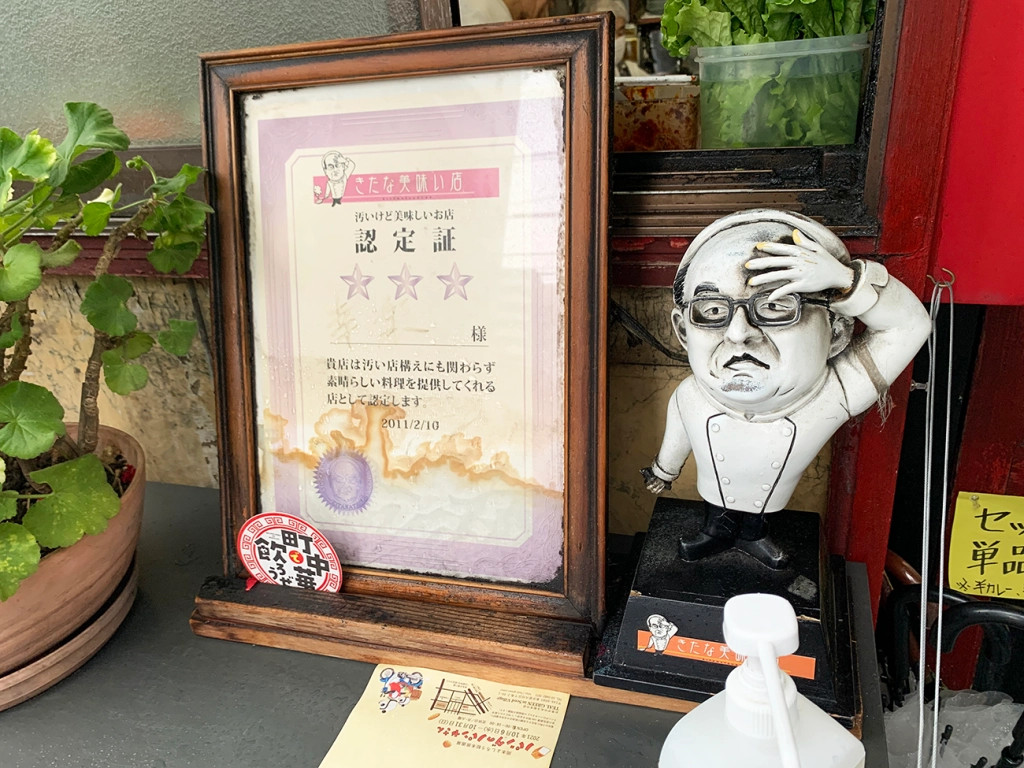



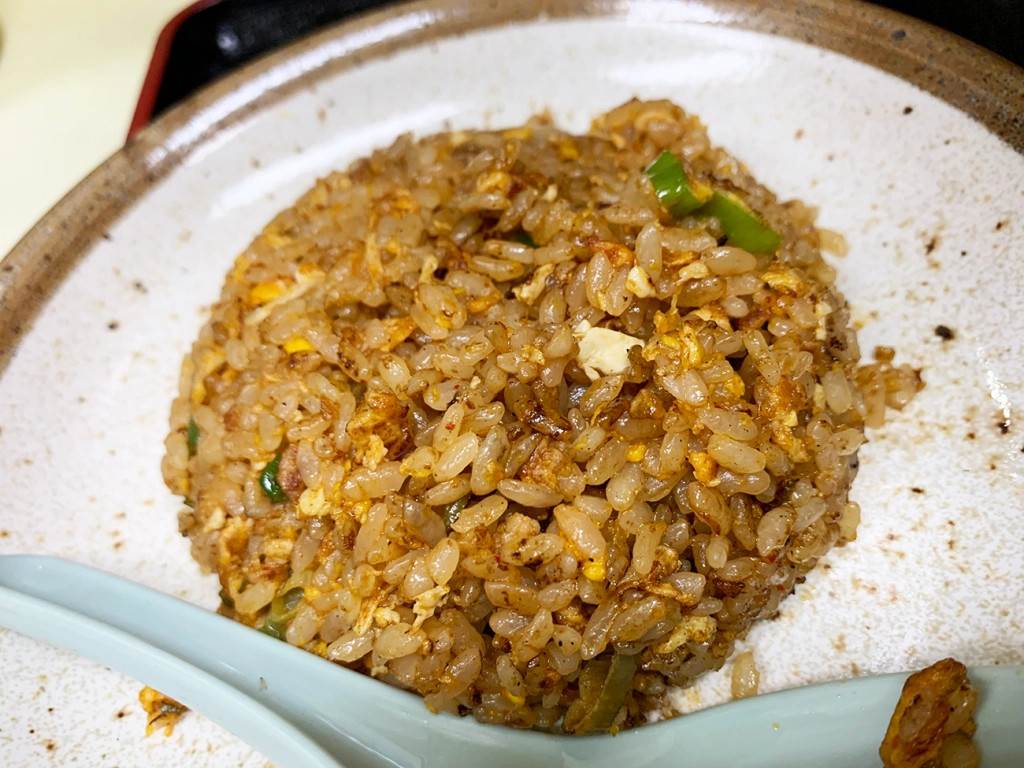
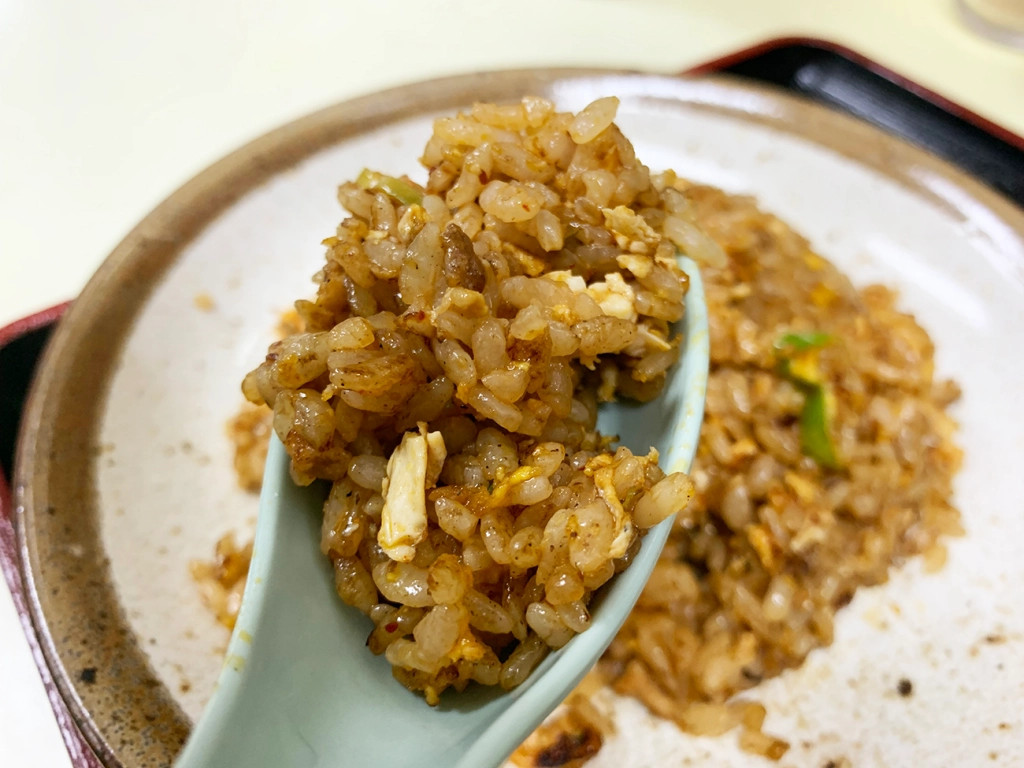
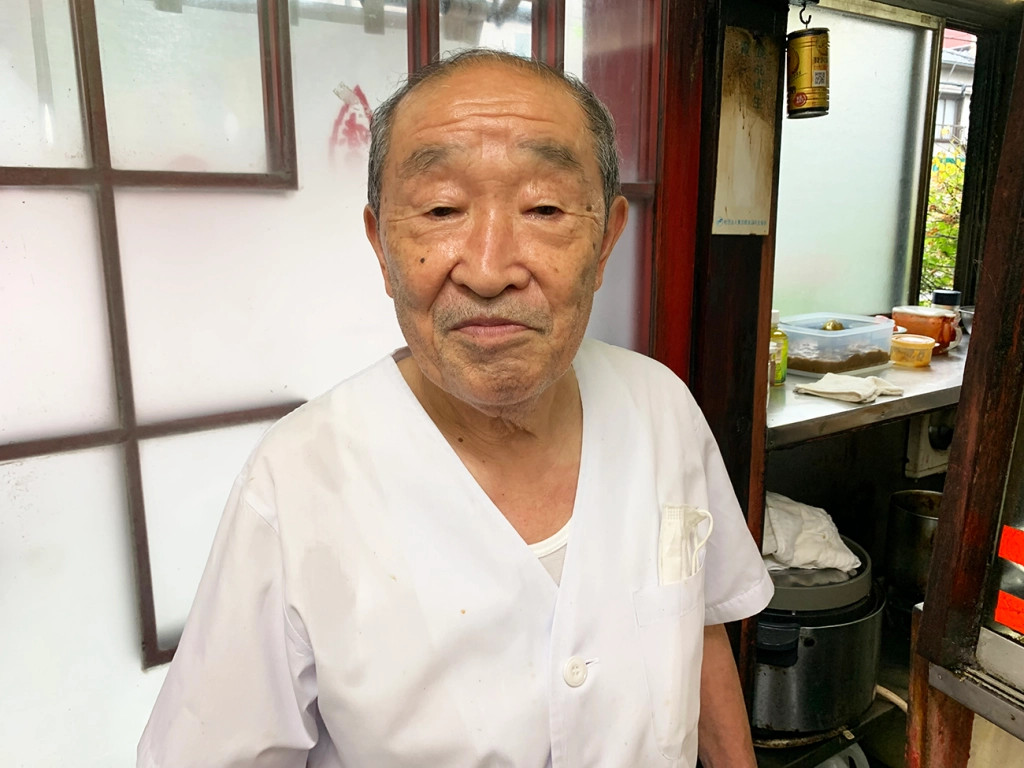
 We try Thai and Indonesian “Ethnic” Cup Noodles, one of them tastes like spicy Fruit Loops
We try Thai and Indonesian “Ethnic” Cup Noodles, one of them tastes like spicy Fruit Loops Sriracha vending machines rising in Japan, our reporter tries it for first time (with Cup Noodle)
Sriracha vending machines rising in Japan, our reporter tries it for first time (with Cup Noodle) Professional Chinese food chef teaches us how to make the perfect fried rice
Professional Chinese food chef teaches us how to make the perfect fried rice This Robo Chef will make you perfect fried rice without any need to lift a heavy wok
This Robo Chef will make you perfect fried rice without any need to lift a heavy wok English-language Reddit falls in love with curry restaurant– Can it win our taste tester’s heart?
English-language Reddit falls in love with curry restaurant– Can it win our taste tester’s heart? Foreigner’s request for help in Tokyo makes us sad for the state of society
Foreigner’s request for help in Tokyo makes us sad for the state of society Japanese city loses residents’ personal data, which was on paper being transported on a windy day
Japanese city loses residents’ personal data, which was on paper being transported on a windy day Seaside scenery, history, and so many desserts on Yokohama’s Akai Kutsu【Japan Loop Buses】
Seaside scenery, history, and so many desserts on Yokohama’s Akai Kutsu【Japan Loop Buses】 Pokémon Sleep camping suite and guestrooms coming to Tokyo Hyatt along with giant Snorlax burgers
Pokémon Sleep camping suite and guestrooms coming to Tokyo Hyatt along with giant Snorlax burgers Osaka governor suggests lowering voting age to 0 to curb population decline
Osaka governor suggests lowering voting age to 0 to curb population decline Smash Bros. director Sakurai stabs Kirby in the face, has delicious justification for it
Smash Bros. director Sakurai stabs Kirby in the face, has delicious justification for it Akihabara pop-up shop sells goods made by Japanese prison inmates
Akihabara pop-up shop sells goods made by Japanese prison inmates French Fries Bread in Tokyo’s Shibuya becomes a hit on social media
French Fries Bread in Tokyo’s Shibuya becomes a hit on social media Mt. Koya planning to instate visitor’s tax to cope with huge tourist numbers
Mt. Koya planning to instate visitor’s tax to cope with huge tourist numbers Red light district sushi restaurant in Tokyo shows us just how wrong we were about it
Red light district sushi restaurant in Tokyo shows us just how wrong we were about it McDonald’s new Happy Meals offer up cute and practical Sanrio lifestyle goods
McDonald’s new Happy Meals offer up cute and practical Sanrio lifestyle goods Japanese ramen restaurants under pressure from new yen banknotes
Japanese ramen restaurants under pressure from new yen banknotes Studio Ghibli releases new action figures featuring Nausicaä of the Valley of the Wind characters
Studio Ghibli releases new action figures featuring Nausicaä of the Valley of the Wind characters New private rooms on Tokaido Shinkansen change the way we travel from Tokyo to Kyoto
New private rooms on Tokaido Shinkansen change the way we travel from Tokyo to Kyoto Tokyo Tsukiji fish market site to be redeveloped with 50,000-seat stadium, hotel, shopping center
Tokyo Tsukiji fish market site to be redeveloped with 50,000-seat stadium, hotel, shopping center Beautiful Ghibli sealing wax kits let you create accessories and elegant letter decorations【Pics】
Beautiful Ghibli sealing wax kits let you create accessories and elegant letter decorations【Pics】 Studio Ghibli releases Kiki’s Delivery Service chocolate cake pouches in Japan
Studio Ghibli releases Kiki’s Delivery Service chocolate cake pouches in Japan New definition of “Japanese whiskey” goes into effect to prevent fakes from fooling overseas buyers
New definition of “Japanese whiskey” goes into effect to prevent fakes from fooling overseas buyers Our Japanese reporter visits Costco in the U.S., finds super American and very Japanese things
Our Japanese reporter visits Costco in the U.S., finds super American and very Japanese things All-you-can-drink Starbucks and amazing views part of Tokyo’s new 170 meter-high sky lounge
All-you-can-drink Starbucks and amazing views part of Tokyo’s new 170 meter-high sky lounge More foreign tourists than ever before in history visited Japan last month
More foreign tourists than ever before in history visited Japan last month New Pokémon cakes let you eat your way through Pikachu and all the Eevee evolutions
New Pokémon cakes let you eat your way through Pikachu and all the Eevee evolutions Disney princesses get official manga makeovers for Manga Princess Cafe opening in Tokyo
Disney princesses get official manga makeovers for Manga Princess Cafe opening in Tokyo Sales of Japan’s most convenient train ticket/shopping payment cards suspended indefinitely
Sales of Japan’s most convenient train ticket/shopping payment cards suspended indefinitely Sold-out Studio Ghibli desktop humidifiers are back so Totoro can help you through the dry season
Sold-out Studio Ghibli desktop humidifiers are back so Totoro can help you through the dry season Japanese government to make first change to romanization spelling rules since the 1950s
Japanese government to make first change to romanization spelling rules since the 1950s Ghibli founders Toshio Suzuki and Hayao Miyazaki contribute to Japanese whisky Totoro label design
Ghibli founders Toshio Suzuki and Hayao Miyazaki contribute to Japanese whisky Totoro label design Doraemon found buried at sea as scene from 1993 anime becomes real life【Photos】
Doraemon found buried at sea as scene from 1993 anime becomes real life【Photos】 Tokyo’s most famous Starbucks is closed
Tokyo’s most famous Starbucks is closed One Piece characters’ nationalities revealed, but fans have mixed opinions
One Piece characters’ nationalities revealed, but fans have mixed opinions We asked a Uniqlo employee what four things we should buy and their suggestions didn’t disappoint
We asked a Uniqlo employee what four things we should buy and their suggestions didn’t disappoint Princesses, fruits, and blacksmiths: Study reveals the 30 most unusual family names in Japan
Princesses, fruits, and blacksmiths: Study reveals the 30 most unusual family names in Japan Noodle joint in Harajuku becomes a hot topic with foreigners on Reddit, but is it any good?
Noodle joint in Harajuku becomes a hot topic with foreigners on Reddit, but is it any good? “Hey, Japanese taxi driver, take us to the best Sapporo ramen place!” – Things don’t go as planned
“Hey, Japanese taxi driver, take us to the best Sapporo ramen place!” – Things don’t go as planned The best Japanese curry in Japan isn’t eaten at a restaurant
The best Japanese curry in Japan isn’t eaten at a restaurant This London ramen restaurant’s super-strange ramen shocks our Japanese taste-tester
This London ramen restaurant’s super-strange ramen shocks our Japanese taste-tester New famous food of Akihabara! Reiwa garlic chive ramen is delicious two times per meal
New famous food of Akihabara! Reiwa garlic chive ramen is delicious two times per meal What’s so funny about “Sweet Fries of Clowns” from Burger King Japan?
What’s so funny about “Sweet Fries of Clowns” from Burger King Japan? How to make a shaved ice dessert out of instant noodles
How to make a shaved ice dessert out of instant noodles Harvester Yakumo: A restaurant inspired by the Colonel from KFC
Harvester Yakumo: A restaurant inspired by the Colonel from KFC Gyoza No Ohsho celebrates birthday with discounts on the weekend of 25 December
Gyoza No Ohsho celebrates birthday with discounts on the weekend of 25 December This is the one and only kakuni pork bowl restaurant in Tokyo, and it’s amazing
This is the one and only kakuni pork bowl restaurant in Tokyo, and it’s amazing Does Tokyo’s King of Tonkatsu live up to its name? We find out 【Taste Test】
Does Tokyo’s King of Tonkatsu live up to its name? We find out 【Taste Test】 We encountered the most frightening fried chicken in Ameyokocho in Tokyo, and ate it anyway
We encountered the most frightening fried chicken in Ameyokocho in Tokyo, and ate it anyway The best soba restaurant on Yakushima island, according to locals
The best soba restaurant on Yakushima island, according to locals Tokyo Secret Eats: Shibuya City staff cafeteria serves Hachiko soba to visitors
Tokyo Secret Eats: Shibuya City staff cafeteria serves Hachiko soba to visitors Japanese curry chain becomes a hot topic with foreigners on Reddit, but is it any good?
Japanese curry chain becomes a hot topic with foreigners on Reddit, but is it any good?
Leave a Reply